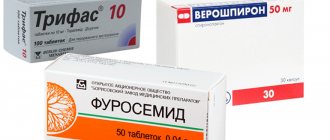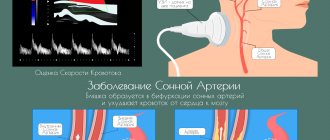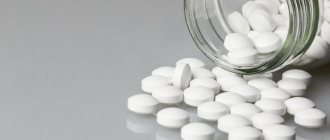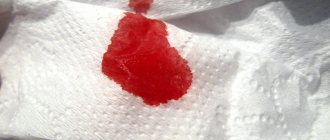August 30, 2021
Regardless of the purpose for which diuretics are used - to stimulate the urinary function of the kidneys, correct chronic heart failure, relieve swelling or treat hypertension (one of the most common purposes when “light” diuretics are used), there are contraindications to their use
What is edema?
Edema is a symptom of various pathological conditions, which are characterized by excessive accumulation of fluid in the tissues and cavities of the body. To recognize swelling, you need to press for a few seconds on the front surface of the shin. In case of edema, a hole remains in this place, which does not disappear immediately.
I think that many people have experienced fatigue and leg pain accompanied by swelling at the end of a hard day. No matter how perfect the human body is, our rhythm of life, level of physical and mental stress, lifestyle and nutritional errors can cause disruptions in the functioning and condition of the tissues and systems of the body.
Swelling may be generalized or localized (eg, limited to one limb or part of a limb). Sometimes they appear suddenly; patients complain that the limb has suddenly increased in volume. More often, swelling develops gradually, starting with weight gain, swelling under the eyes in the morning and a feeling of “tight shoes” at the end of the day. Slowly developing swelling can become massive before the patient seeks medical attention.
Edema itself does not cause a large number of complaints, with the exception of a periodic feeling of tightness or fullness; other symptoms are usually associated with the underlying disease. Patients with edema due to heart failure (a common cause) often present with exertional dyspnea, orthopnea, and paroxysmal nocturnal dyspnea. Patients with edema due to deep vein thrombosis (DVT) often have pain. Edema can be false or true. False edema occurs with myxidema, systemic scleroderma and obesity. It has a characteristic feature: pressing a finger on the skin does not leave a hole. With true edema, the hole does not disappear for a long time, which indicates the free movement of fluid in the tissues. But there are exceptions here, doctors know about them.
Causes of swelling of the legs
In an adult, swelling of the legs occurs due to high consumption of salt, which in its chemical structure includes sodium and chlorine. The first component usually becomes an obstacle to the normal passage of water in the body, which causes fluid to accumulate and the legs begin to swell. Swelling is especially typical during hot weather, when a person consumes even more water. Liquid in large volumes simply does not have time to be released and accumulates, resulting in edema.
Swelling may also be associated with the use of certain medications. For example, specialists often prescribe a medication that contains glucocorticoids (adrenal hormones) to an allergy sufferer. Long-term use of this medication may cause various side effects, including swelling of the legs. Also, the condition of the lower extremities is affected by medications that are used for high blood pressure, treatment of immune diseases and hypocortisolism.
Causes of edema
When kidney function is impaired, water and salt are retained in the body, which leads to edema. In addition, with some kidney diseases, the amount of protein in the blood decreases (it is excreted in the urine), which also causes swelling.
If there is vascular disease from the heart, then blood and lymph tend to accumulate and put pressure on the walls of blood vessels. If the permeability of the vein walls is increased, then water will accumulate in the body. There are diseases that lead to the accumulation of water: thrombophlebitis, CVI, varicose veins; protein deficiency (hypoproteinemia); renal failure; hormonal imbalance; allergic reactions; heart disease; diabetes; cirrhosis of the liver; lymphedema; injuries.
One of the common causes of edema is insufficient lymphatic drainage, when fluid does not flow out of the tissues at the proper rate. Lymphatic vessels have valves and muscles that regulate the flow of lymph. But with age, in case of poor heredity or with additional stress (for example, during pregnancy), they cease to cope with their task - and edema forms.
We recommend keeping a diary and recording the circumference of your right and left ankle at different times, as well as the circumstances under which the swelling appeared, such as hot weather. This will help to identify under what circumstances the swelling appeared and what is causing it. The cause of the development of lymphedema can be a constant static load when a person is sitting or standing. At the slightest sign of any swelling, you should consult a phlebologist, lymphologist or therapist.
Medications indicated to reduce leg swelling
Diuretics, otherwise called “diuretics,” are used to improve the excretory system. The task of such products is to remove salts and fluids that accumulate in tissues and cells. As a result of the use of diuretic drugs, swelling either decreases or disappears altogether.
As a rule, such medications do not have serious contraindications or unpleasant consequences. Doctors only recommend not to use them frequently, because diuretic medications can lead to dehydration. If you consume a lot of fluid, the balance in the body will be maintained, but there is still a danger of such a result. Moreover, with a lack of fluid in the body, all life processes slow down.
Selection of diuretics
Regardless of the purpose for which diuretics are used - to stimulate the urinary function of the kidneys, correct chronic heart failure, relieve swelling or treat hypertension (one of the most common purposes when “light” diuretics are used), there are contraindications to their use.
For example, they try not to prescribe diuretics for diabetes mellitus, since many of them reduce the sensitivity of tissues to insulin. Gout and any other condition that causes elevated uric acid levels is also a factor against taking diuretics. An insufficient level of potassium in the blood is another contraindication to the prescription of diuretics - further “washing out” of potassium threatens the development of cardiac arrhythmias.
On the other hand, there is a group of so-called potassium-sparing diuretics that should not be taken if potassium levels are elevated. Liver cirrhosis and liver failure are another contraindication to taking diuretics.
In most cases, when the use of diuretics is contraindicated, the use of diuretic herbal decoctions may be considered.
What to drink for swelling? This is exactly how patients sometimes pose the question, but this is fundamentally wrong. Regardless of the origin of edema, the treatment will be complex, and what will be included in it will depend on the pathology itself and its stage, and only a specialist should decide this. Thus, treatment with these drugs alone, without correction of the ionic composition of the plasma, can lead to a large loss of fluid and mineral salts from the vascular bed, and this output will be greater than from the intercellular space. This can lead to a decrease in the amount of liquid part of the blood, or plasma, a decrease in the pumping function of the myocardium and a sharp drop in blood pressure, which can manifest as collapse. If the patient also has symptoms of heart failure, this will cause a reduced return of venous blood to the heart, and will further aggravate the low cardiac output.
Since there are a lot of options, let’s look at drug therapy regimens using the example of venous, as well as cardiac and renal pathologies as the most striking. The most powerful diuretic is Mannitol, which can be prescribed for any swelling. Also, in case of high blood pressure, it is recommended to use ethacrynic acid. However, it is not recommended to choose and use the drug yourself. At a minimum, you should read the instructions, and best of all, get advice from a specialist.
Doctors also recommend the effective drug Trifas (torsemide), available in tablets. The recommended dose is ½ tablet per day. Side effects may occur when using the drug, so it is better to take it only as prescribed by a doctor. Previously mentioned was Hydrochlorothiazide, which is prescribed in the following cases: arterial hypertension, nephrotic edema, chronic renal failure, liver cirrhosis with ascites, acute glomerulonephritis. At the same time, it reduces swelling and fights other problems. Available in tablets.
Diuretic tablets are divided into four types:
- Potassium-sparing. Keeps potassium at a stable level, since potassium is usually released when using diuretics.
- Loopbacks. Suppress the reverse absorption of potassium, chlorine and sodium.
- Thiazide. They have the property of being quickly absorbed by the walls of the gastrointestinal tract.
- Thiazide-like diuretics. With a diuretic effect, less potassium is excreted from the body.
Diuretics also help with hypertension. Excess fluid is removed from the body and blood pressure decreases. Accordingly, swelling of the legs also decreases or disappears. The most common medications are:
- Hydrochlorothiazide
- Chlorothiazide
- Indapamide
- Furosemide
Ultrasonic facial cleansing can remove facial swelling
Ultrasonic facial cleansing is a painless method that can deal with the problem quickly and easily. Here, the facial skin is exposed to ultrasound. This procedure can be performed in any salon. The most important thing is that it is carried out by a professional who knows all the indications, contraindications, and subtleties of the work. Then we can talk about effectiveness, high-quality results and the absence of complications. Minor swelling on the face in the morning will disappear for a while. You will need to undergo several sessions to consolidate the results.
Why do feet swell during pregnancy?
During pregnancy, the outflow of fluid is often disrupted. This is explained by large-scale changes occurring in the body:
- weight gain;
- changes in hormonal levels;
- compression of the inferior vena cava by the enlarging uterus;
- decreased mobility;
- diet correction.
In most cases, swelling is considered as a variant of the physiological norm. There is no need to resort to drug treatment; it is enough to keep the situation under control. However, the spread of edema throughout the body can result in serious pathologies, such as preeclampsia.
The expectant mother should monitor the dynamics of the increase in calf circumference, blood pressure and the ratio of fluid consumed and excreted. The kidneys experience increased stress during pregnancy, so at the first alarming symptoms it is better to be examined by a nephrologist.
Quincke's edema is not fatal
Angioedema, Quincke's edema, anaphylactic shock... We know that all these are acute conditions associated with allergies, but most of us do not particularly understand the difference between them, and do not understand how to help ourselves or another person in such a situation. We asked a professional to clarify
Our questions are answered by
Doctor of Medical Sciences, Professor of the Department of Childhood Diseases of the Children's Children's Diseases named after N.F.
Filatov Sechenov University, allergist-immunologist of the highest category Asya Kudryavtseva. – Asya Valerievna, let’s start with Quincke’s edema, which is especially often discussed on social networks. How dangerous is this condition?
– Quincke's edema is an outdated name. Now it is called angioedema.
Angioedema and urticaria are two parallel ongoing stories. These are conditions associated with the release of histamine from mast cells.
Histamine
An organic compound with a number of functions, including being a mediator of immediate allergic reactions. Under normal conditions, histamine is found in the body predominantly in a bound, inactive state. During various pathological processes, as well as when certain chemicals enter the body, the amount of free histamine increases.
- How does this happen?
– In case of allergies, angioedema can be caused by taking medications, food products, in young children after eating milk or eggs, in older ones - fish, seafood, nuts or peanuts. Swelling can occur when bitten by stinging insects.
Immunoglobulins E are antibodies directed against a protein we call an allergen and are associated with immediate, dangerous allergic reactions. Allergens dock with immunoglobulin E, like spaceships dock with a station, and together they attach to mast cells, which release histamine in response. Histamine, in turn, enters the body tissues, causing symptoms such as redness, swelling and itching.
If the release of histamine occurs on the skin of the arms, abdomen and back, blisters will appear in these places, such as we see when a mosquito bites. With urticaria, the blisters can be small in diameter, but sometimes they increase in size and even merge.
Angioedema, unlike urticaria, is the release of histamine in that part of the skin where it is well supplied with blood and is prone to swelling. If this occurs in the area of the eyelids, lips, hands or feet, the swelling in a person looks threatening, and it often changes his appearance. Despite the fact that the symptoms of urticaria and angioedema are not very similar, the essence of the events that occur is the same.
– Doesn’t angioedema affect the larynx? After all, this is the scenario that people fear most.
– It seems to us that with swelling of the eyelids and lips, a similar process occurs in the larynx. In fact, this is not true. Laryngeal edema is an extremely rare condition.
I have encountered the following misunderstanding: some people believe that angioedema is the lips and eyes, but Quincke's edema is the swelling of the tongue and larynx. In fact, angioedema and angioedema are different names for the same condition.
Just Quincke's edema, as I already said, is an old terminology that has existed since the end of the 19th century, when the German physician Heinrich Quincke first described it.
But now it has fallen out of use in professional language. The fact is that when we see blisters on the stomach, it does not particularly frighten us, but when a child or an adult’s eyelids are so swollen that it is difficult to open their eyes, the lips have greatly increased in size, there is a feeling that something completely terrible is happening, and we begin to fear serious consequences.
I have discussed angioedema many times with resuscitators, asking them how often angioedema actually leads to respiratory arrest. They answer that they have not encountered fatal outcomes of angioedema when it comes to allergic conditions associated with histamine.
– Where does the fear of death from suffocation due to angioedema come from?
– There is a very dangerous disease - hereditary angioedema (HAE), which, indeed, can lead to fatal consequences, but, despite its external resemblance to ordinary angioedema, it is a completely different independent disease, and an orphan (very rare). It is not caused by an allergy.
If with ordinary angioedema antihistamines help well, then with HAE the lips and tongue may swell, greatly increasing in size, but no antiallergic drugs will help here. The leading role here belongs not to histamine, but to bradykinin, a completely different mediator.
This condition also occurs suddenly, but rarely in children, more often in adults, and it can be provoked by a sudden strong experience or stress.
Not only antihistamines will not relieve such angioedema, but also hormonal drugs that are used for severe allergic reactions; only a blood plasma transfusion or the introduction of special medications that are not available over the counter will help.
Doctors know how to differentiate between these two conditions, but lay people are usually unaware of the difference between the two diseases, and are worried that they may suddenly have an attack that will lead to respiratory arrest.
It turns out that fears of a fatal outcome are true only in relation to hereditary angioedema, in which the tongue can swell to such an extent that suffocation occurs. I repeat once again: this condition is very rare, there are only a few such patients.
As a rule, before this kind of attack occurs, the patient already knows about his illness. It is possible that he has already been on the operating table due to sudden abdominal pain characteristic of appendicitis. They begin to operate on him for appendicitis, but they find swollen mesentery and intestines there, because swelling in such patients can occur in any part of the body.
Simple angioedema can be treated with all the familiar antihistamines and hormones.
– Can allergic angioedema suddenly appear in adulthood?
– Yes, this happens, but unlike HAE, it is precisely an allergic reaction. In adults it is most often a drug allergy, in children it is a food allergy. These conditions, as I have already mentioned, depend on the appearance of class E immunoglobulins in the blood, the level of which can be looked at in the blood after an attack and the allergy can be confirmed.
This situation is not fatal, and the person can be helped.
Angioedema occurs within a few minutes to two hours after contact with the allergen. With an allergy to animals, it can develop in a child, for example, if his hands are licked by a dog as a reaction to the animal’s saliva. Or, for example, if a child stroked an animal and then rubbed his eyes with the same hand. There will also be swelling there. Then we will talk about allergens that are in the fur of a cat or dog.
When plants bloom, pollen can get into your eyes and cause swelling of the eyelids. This year, the alder bloomed for a very long time and intensively, and we, allergists, observed angioedema of the eyes quite often. This is always an acute immune-dependent reaction, that is, a manifestation of pollen allergy (hay fever).
– What would you recommend as first aid?
– Absolutely all people prone to developing allergies should have some kind of antihistamine in their home or travel medicine cabinet, since, indeed, the onset of allergies can happen suddenly.
A child or adult with angioedema must be given a drug that blocks the effect of histamine on tissue. I would like to note that often there is no high urgency in taking a medicine, and if suddenly such a drug is not at hand, you can have time to get to the nearest pharmacy and buy it. They are freely available.
In the acute phase of the disease, absolutely any antihistamines can be used, including those that cause a sedative effect (suprastin or tavegil). These drugs are absorbed already in the oral cavity, act as quickly as possible and relieve swelling well.
It must be remembered that after taking such a drug, a person should not drive. Most likely, the doctor will prescribe further treatment for him, and then he will need to use a more modern medicine (Claritin, Erius, Zyrtec or Xyzal), which is taken once a day and does not have a sleeping effect.
These drugs retain high concentrations in the blood well, so their effect, unlike first-generation drugs, is quite long-lasting. They are not addictive, so you can take them for a long time.
– And there is also anaphylaxis. Should I be afraid of her?
– Anaphylaxis is a lesion during the development of an allergy of at least two systems at once. In the vast majority of cases, this happens to a person who has been suffering from allergies for some time. This is a condition that affects more than just the skin. Other organs are involved, and we observe, for example, angioedema and difficulty breathing, angioedema and diarrhea, hives and vomiting, and so on.
In itself, anaphylaxis without shock is not a life-threatening condition, but it is anaphylactic shock, which is quite rare, that leads to the death of the patient.
Due to increased anxiety these days, many people mistakenly believe that anaphylactic shock can suddenly happen to literally anyone, which is absolutely wrong.
This is a very rare occurrence even in people who suffer from allergies, let alone in the healthy population.
It happens like this.
A child or adult ate peanuts for the first time and his mouth itched. The second time, swelling of the eyes occurred. The third time, not only did my eyes swell, but it became difficult to breathe. When swelling of the eyes and suffocation occurs, this is already an anaphylactic reaction. It can be either not very severe or severe, when loss of consciousness occurs and the person may die.
A reaction is considered mild when there is no sharp decrease in pressure and changes in the cardiovascular system. Doctors treat this condition with a fast-acting drug called epinephrine.
In everyday life in developed countries of the world, auto-injectors are used - these are syringes in the form of automatic pens so that the patient, feeling the approach of anaphylaxis, can quickly inject himself (or a sick child) into the thigh directly through clothing. This should be done when even mild anaphylaxis occurs, without waiting for shock.
Usually a person knows how his allergies develop. It is clear to him from the symptoms that he ate something wrong, for example, there were trace amounts of peanuts in chocolate without nuts, which is an allergen for this patient.
Epipen - the so-called pen filled with adrenaline, can be used in absolutely any situation, not necessarily at home or in a hospital. It is recommended that each patient always have two of these pens with him.
In Russia, Epipen and Epipen Junior (for children) are registered, but, unfortunately, they are not sold in pharmacies.
Anyone who is at risk of developing anaphylaxis needs to be trained in how to give injections with a regular syringe at home or with an auto-injector while an ambulance is being called for the patient. Administering adrenaline by regular injection is not a very good treatment option, because it is not so easy to calculate and inject the required dose of adrenaline.
Now such patients and parents of children prone to anaphylaxis are uniting among themselves to achieve centralized purchase of Epipen from the state so that it can be purchased at a pharmacy with a doctor’s prescription. However, many of them buy EpiPen online, which is not prohibited by law.
To teach how to use an auto-injector, the manufacturing company even produces special training pens. The patient should be trained not to worry about how he will cope with the injection in an acute situation. They also explain to him what sensations he should experience during autoinjection.
It must be borne in mind that even after the administration of Epipen, it is necessary to call an ambulance, and doctors must monitor the condition of the child or adult after an attack of anaphylaxis.
Often, parents of children at risk of developing anaphylaxis themselves use the drug prednisolone. In such cases, we doctors instruct them in detail.
I would like to emphasize once again: anaphylaxis is a rare phenomenon, and anaphylactic shock is even rarer. I observe a level of anxiety among people about these phenomena that is completely out of proportion to the scale of the problem.
For example, many people believe that dental anesthesia drugs are extremely dangerous, and literally each of us has a chance of not getting out of the chair after dental treatment.
There are studies, however, that demonstrate that the risk of anaphylaxis due to local anesthetics is extremely low. It happens that a person attributes the symptoms that he experiences after such an injection to anaphylaxis, but in fact he had them as a result of a panic attack.
I write a blog, “Life Without Allergies,” on the Internet. There I provide scientific data, for example, the following: the number of deaths from anaphylaxis is from 0.35 to 1.06 episodes per million inhabitants per year, while this figure has not changed over the past 10-15 years. Moreover, death from anaphylaxis in the general European population is much less common than accidental death.
Cases of death from anaphylaxis are often described in the media, which is why they cause such a strong reaction in us. Now people are more worried about their health than usual, but I advise everyone to approach the problem wisely and not be afraid of an event whose risk for the vast majority of people is negligible.
Link to publication: miloserdie.ru
Why does one leg swell?
If the swelling is asymmetrical, its cause is localized directly in the affected limb. Swelling may occur due to bruises on the legs or more serious injuries:
- ankle joint injuries;
- meniscus tear;
- separation of the calf muscle;
- bone fracture;
- tissue compression.
Venous edema is also most often unilateral. Varicose veins cause fluid stagnation, but they are localized in one limb where the vessels are affected. This is indicated by the characteristic venous network.
Thrombophlebitis disrupts blood circulation, and at the same time the outflow of fluid from tissues. In this case, swelling is accompanied by other unpleasant symptoms: fever, pain, compaction in the blockage area.
Relieving swelling during pregnancy
In the body of a woman carrying a fetus, the concentration of the hormone progesterone increases. It is one of the causes of edema during pregnancy. In no case should it be reduced, because it is this that ensures the attachment of the embryo.
There is no need to fight physiological swelling. The main thing is to prevent it from getting worse. To alleviate the symptoms, you can carry out the mentioned water procedures and adhere to a healthy lifestyle (moderate activity, water consumption within the daily norm, adjusted for restrictions imposed by pregnancy, rest on your side).
The pathological nature of edema can only be determined by a doctor based on test results (in particular, protein in the urine). Having discovered the cause, he will prescribe treatment. It is prohibited to take any medications on your own.
How to relieve swelling after a bruise
Treatment for a leg bruise usually comes down to eliminating pain and swelling. The swelling in this case is caused by damage to the blood vessels and the accumulation of fluid from them under the skin. The latter puts pressure on the nerve endings, hence the pain. So eliminating swelling also helps to get rid of unpleasant sensations.
You can help a bruised limb at home:
- stretch and provide peace;
- apply a wet towel, ice or a heating pad with cold water;
- apply a tight bandage.
You can also resort to drug treatment. External agents containing troxerutin or heparin will help. They strengthen capillaries, optimize blood viscosity and relieve inflammation.
How to relieve leg swelling caused by heat
The best medicine in this case is gravity. Arriving home and throwing away the shoes that have become a vice, it is enough to lie down and place your feet higher (at a minimum - on several pillows, at a maximum - against the wall).
When it becomes easier to move, you need to take a shower. Ideally, a contrasting one that trains blood vessels, but you can limit yourself to just cool. In this case, you should direct the pressure to the feet: such a hydromassage will restore blood circulation.
You can disperse the fluid with light exercises: pulling the toe towards you and away from you, rotating your feet, squatting. But if you don’t have the strength to do this, and your legs hurt, it’s better not to torture them.
Foot baths are also useful. Even plain water will provide relief, but you can enhance the effects with additives. This could be sea salt or herbal infusions. Compresses made from cabbage leaves or bandages soaked in a decoction of birch leaves improve the condition of the limbs.









